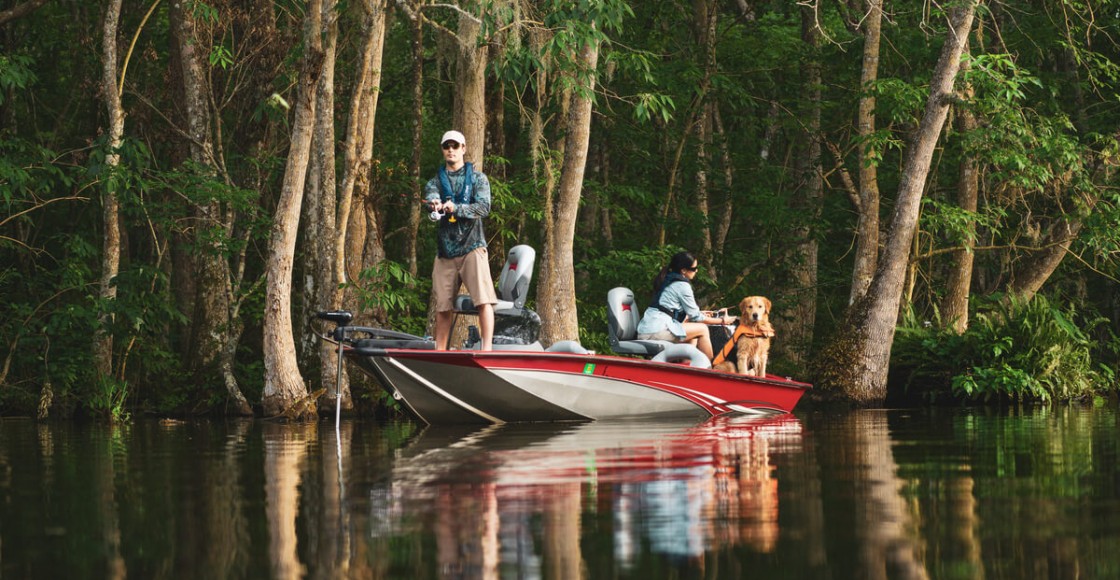How to Avoid Spooking Fish
Last Updated on January 12, 2022 by Boatsetter Team
Let’s talk about how to avoid spooking fish. In other words, don’t alert fish to your presence so that they swim away before you even get the chance to cast at them. And when you do cast, make sure your presentation is natural enough that it doesn’t disturb the fish to realizing something is awry.
Casting
When fishing shallow water with lures or with heavy flies (such as streamers) or extra weight on your line, you want to nail the entry since fish are likely to be closer to the surface. Flipping and Pitching are useful techniques with a spinning or baitcasting reel for casting your line (1) with accuracy and (2) while keeping the line close to the surface so that it doesn’t plop in like a cannonball.
Major League Fishing co-founder and Bass Fishing Hall of Famer Gary Klein demonstrates both flipping and pitching in the video below.
When fly fishing, one casting technique to consider using is the Roll Cast. This technique involves casting your fly from a starting position when it’s already in the water and casting it from there to your target. The beginning surface tension of the water minimizes the force that your line is moving with and thus can result in a softer landing of your fly. Here’s another brief article and video to learn more on roll casting for beginners.
Easily I Approach
Your approach becomes ever more important the more shallow or clearer the water gets.
It’s not just how you cast your line to fish. Boaters or waders should take care in how they arrive to a fishing spot. Experienced captains and boat anglers consider ways to coast smoothly into a fishing position. For instance, lower your motor early or pole a skiff slowly and carefully into casting range (additional tips for boaters from Boating World). Waders should be careful where they’re walking and avoid disturbing the environment by kicking up dirt or rocks with their steps.
Quiet On The Set
Whether you’re using live bait, conventional tackle or flies, a fisher is essentially a puppeteer controlling their line and whatever is attached to try to mimic the type of food that a fish would eat. In order to make the setting realistic, you wouldn’t want to disturb it with any unnatural sound to alert fish. Even if a noise doesn’t cause fish to scatter, they might be more wary to bite what you’re throwing if their senses are engaged by loud conversation, a running motor, music, etc.
Though we’re focused here on avoiding unnatural sound, it is worth mentioning that sometimes you may be able to attract certain species like bass that can act curiously upon hearing noise. If you’re going to experiment with noise to attract fish, use it carefully.
What Are You Looking At, Fish Eyes?
Again, depending on the fish species and the environment, visibility as well as a fish’s ability to spot you or your accessories may factor into spooking fish. Some fishers will say from anecdotal tests (see the last section in this article from Outdoor Life) that they fish better in camouflage. When you’re looking for an edge, you might as well make a simple choice of something that blends better into your environment than say, this (the short arms don’t help, either).
Besides clothes, a shiny piece of jewelry or accessory can be another fish-spooker that’s easy to forget about. Try not to wear rings, watches, etc. which might reflect light across the water and a fish’s line of vision. Even shiny scissors or other metal tools that you bring along might give away your position to an unassuming lunker.
Distance is another factor to consider when you’re fishing shallow water. When possible, stay farther away from the area you’re casting to in order to avoid being seen. Even a shadow on the water may signal to fish that something is up. Remember, birds eat fish so shadows are an indicator that a predator could be very near. In addition to being more active feeding times, another advantage of fishing at dusk or dawn is that those times of day make shadows more avoidable.
In rivers and streams, consider the direction of the water flow and the way fish are facing before you cast. For instance, trout feed facing upstream into the current. Thus, if you cast from a position downstream and to the side of a fish you’re targeting, you can cast above where the fish is holding its position and either retrieve or let your lure or fly drift down towards the fish. Casting upstream and from the side will help prevent the fish from seeing your line before it sees your lure (or you!).
Don’t Be Scared, Get Out There!
Again, all of these tips on avoiding spooking fish apply based on the fish you’re targeting; the type of tackle, bait, or fly you’re casting; and the environment. There are cases when you may want to attract the attention of a fish with an aggressive landing, a certain noise, and of course, there are movements to simulate for tricking fish into biting what they think is a treat.
The best way to effectively learn and practice is with an expert. Search for charter captains and fishing guides in your area or a destination you’re traveling to from Boatsetter: https://www.boatsetter.com/fishing-charters.
Or, find a fishing boat to rent and get to spots away from the crowd where you’ll be able to sneak up on fish: https://www.boatsetter.com/fishing-boat-rentals.

Boatsetter empowers people to explore with confidence by showing them a world of possibility on the water. Rent a boat, list your boat, or become a Boatsetter captain today.












